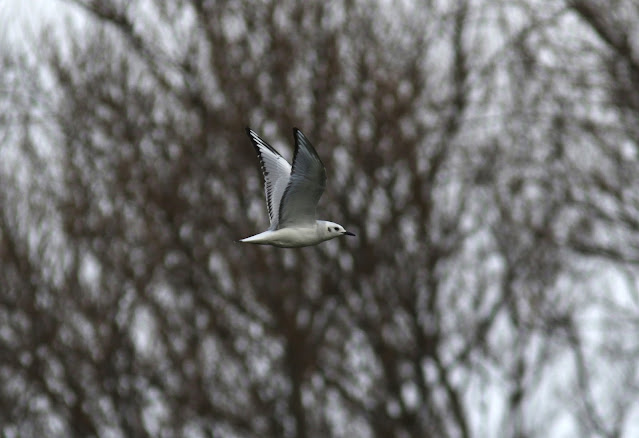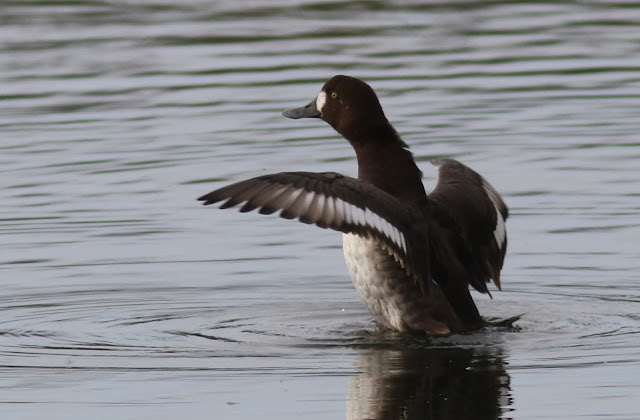It didn't take me long to remember why I love the Azores. Within two hours of getting off the plane at Terceira I had seen this lot HERE and HERE, one WP tick and two Azores ticks already in the bag.
This stunning Belted Kingfisher has been around since October 2021. An Azores tick.
First-winter Bonaparte's Gull, this bird has been around for a while
Male and female Greater Scaup (above and below) and a male Lesser Scaup. The male Greater Scaup is quite slight built with rather dark heavily vermiculated upperparts. I mistook the female for a Lesser Scaup at first but the wing bar (white secondaries grading into the primaries, below) is right for Greater Scaup. The American race of Greater Scaup (Nearctica) is supposed to be more Lesser Scaup like so it's worth considering that possibility. The male and female arrived together in November and the male Lesser Scaup appeared in December. There is another pair of Greater Scaups on the island too. Up date 090222- Peter Stronach (Highlands area recorder) has commented on twitter that the hollowed out head shape and the dark lower scapulars on the male would makes these birds 'stand out a mile' in the flocks of European Greater Scaup they get in Scotland. Male Lesser Scaup (left) and Greater Scaup
Another wildfowl conundrum - a male Green-winged Teal presumably with a female of the same species . However the female shows a mix of features. The head pattern is quite strong (a supercilium with a hint of a loral spot) which is good for female Green-winged Teal but the orange at the bill base and the pale speculum borders, particularly the white tips to the greater coverts, are European Teal features. Update 090222- Peter Adriaens kindly informs me that the tertial pattern confirms this as Eurasian Teal, with the complete black outer edge and overall plainer tertails.
Female European and male Green-winged Teal?
These were easy to identify! Ring-necked Ducks.
Found this Water Rail, the first on the Azores since 2013 and only the 8th record for the Azores. It sparked a local twitch at dusk, back tomorrow to help Ruben and Co find it.
There have been up to 13 Ring-billed Gulls around this winter, the usual wintering flock that is best seen at dusk in the pre-roost on Praia da Vitoria Beach. I could only find 10 birds, 6 adults and four first-winters. Also four Common Gulls.
Paul da Praia
There's up to 130 Glossy Ibis on the island at the moment, most of them roosting on Paul da Praia




















No comments:
Post a Comment